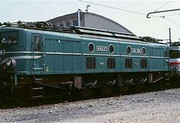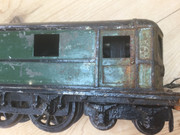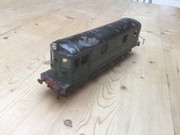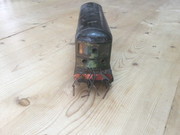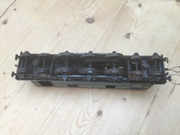The wheel arrangement 4-6-4 was a common one for electric locomotives before WW2. Other similar arrangements included 2-6-2, 2-8-2 and 4-8-4.
These were particularly common on mainland Europe, and examples could be found in France, Italy and Switzerland. There were similar types in the USA but being America they had to go bigger, and 4-6-6-4 and 4-6-6-6-4 wheel arrangement was not uncommon! One thing to note however was that the wheel arrangement of non-steam types usually counted axles, and allocated a letter to driven axles, thus a 4-6-4 would be a 2-C-2, and a 2-8-2 would be a 1-D-1.
In the UK there was only one electric locomotive built for a home railway which was arranged in this manner. In 1922 Vincent Raven constructed a locomotive intended for the abandoned North Eastern Railway overhead wire electrification scheme from York to Newcastle. NER number 13 was 2-C-2 (4-6-4) rated 1800 horse power, and received LNER number 6999, and allocated BR number 26600. It never pulled the express trains it was intended for and was stored at South Gosforth. It was withdrawn in 1950 and scrapped a year later.
This is the best picture I can find.

This is a French 2-D-2 one.
